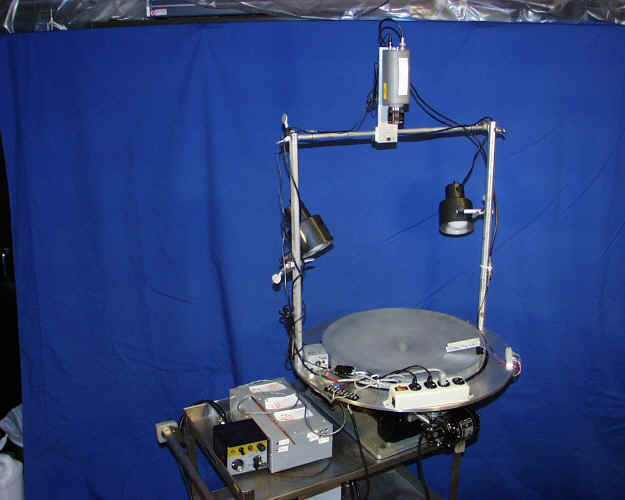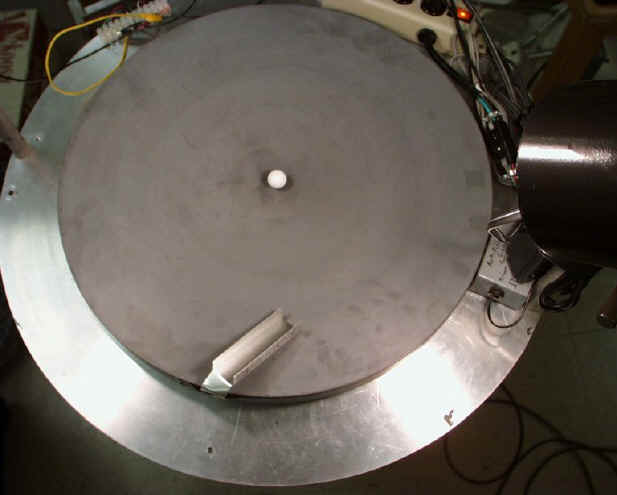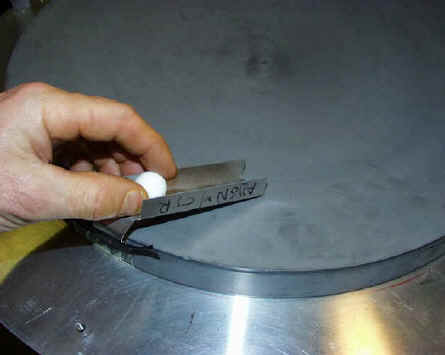
INERTIAL OSCILLATIONS :DEMONSTRATE INERTIAL CIRCLE MOTION OF A BALL ROLLING ON A PARABOLA THAT IS SET ON A ROTATING TABLE. VISUALIZE FROM REST OR ROTATING FRAME.
This experiment is similar to the Coriolis Force demonstration, except that the rotation rate is set so that the parabolic surface of the PVC dish is a geopotential. CCW and CW basic rotation allows the demonstration that the inertial circles are always anticyclonic (rotating opposite to the basic rotation).

Place the gray parabolic dish on the Rotating Table Facility. Attach the feed ramp with electrical tape. Use a steel ball or a plastic ball painted with fluorescent paint as a particle. Release the ball down the shoot by reaching in while the table is rotating. This is a little tricky. Avoid being hit by the vertical support tubes.

White ball, dish centered on the turntable, launch ramp attached.

Releasing the ball. Must be done while turntable is rotating.
A Little "Theory":
The geopotential surface is z = Omega^2 * r^2/(2* g). We choose the basic rotation frequency Omega so that this surface fits the shape of the parabola. You can test the theory by carefully placing a ball to be stationary on the surface while rotating. If Omega, the rotation rate, is correct, the ball should remain motionless.
The inertial circles are anticyclonic. One way of thinking about it is the circles balance centrifugal (outwards) and Coriolis (inwards) forces. Requiring the Coriolis force to be inwards means the inertial circle motion must be anticyclonic. In this balance V*V/r ~ 2*Omega*V. But V = omega * r , where omega is the frequency of the inertial oscillation. Thus omega = 2*Omega, the "Coriolis Frequency."
QT MOVIE OF OSCILLATIONS WITH CCW ROTATION (BIG SCREEN)
QT MOVIE OF OSCILLATIONS WITH CW ROTATION (BIG SCREEN)
See Also: Particle Motion on a Rotating Platform, Air Hockey on a Rapidly Rotating Planet
©2000. John Hart, University of Colorado